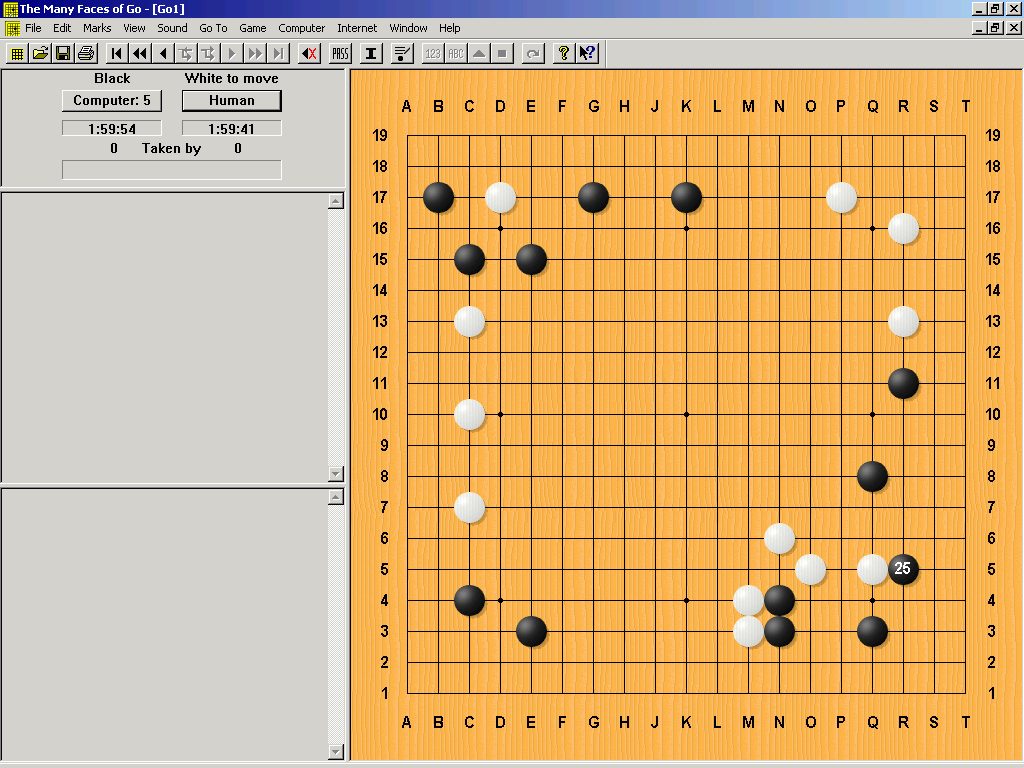Retro Replay Review
Gameplay
The Many Faces of Go delivers a robust and well-structured learning curve that will satisfy both newcomers and seasoned players. From the moment you launch the game, you’re guided through intuitive tutorials covering basic rules, stone placement, and capturing techniques. The progression system unlocks increasingly challenging AI opponents, ensuring you constantly test and refine your skills without feeling overwhelmed.
Beyond solo play, the title shines with its online matchmaking system. You can easily connect with opponents around the world, filter by rank, and even spectate high-level matches to pick up strategic insights. The computer AI offers multiple difficulty tiers, each reflecting distinct playstyles—some focus on territorial control while others emphasize aggressive invasion tactics.
A standout feature is the extensive problem database, which currently holds thousands of tsumego puzzles ranging from absolute beginner level to professional-grade complexity. Regular online updates add fresh problems and new joseki and fuseki studies, meaning the game evolves alongside your development. Whether you want a quick mental warm-up or a deep dive into advanced shape recognition, The Many Faces of Go has you covered.
Graphics
While Go doesn’t demand cutting-edge visuals, The Many Faces of Go approaches presentation with thoughtful attention to detail. The virtual wooden board boasts realistic grain textures, and the stones feature subtle shading and reflections that mimic their glass or slate counterparts. These touches elevate the tactile feel of each move and prevent the interface from feeling sterile.
The user interface is clean and unobtrusive: move timers, commentary boxes, and coordinate labels appear only when relevant. You can toggle animated stone placement on or off, depending on whether you prefer a cinematic feel or a snappier pace. Highlighting tools draw attention to recent moves, suggested variations, and even territory boundaries, keeping you oriented on larger boards.
Customization options let you tailor the aesthetics to your taste. Choose between traditional wooden boards, minimalist grid layouts, or a dark-mode theme for late-night sessions. Adjustable font sizes and colorblind-friendly palettes ensure accessibility, proving that good design in a board game simulator extends beyond mere prettiness—it’s about clarity and comfort.
Story
Although Go is fundamentally a board game without a conventional narrative, The Many Faces of Go weaves in a rich historical tapestry that immerses you in its 2,500 to 4,000-year heritage. Through an in-game “Go Museum,” you can explore the game’s Chinese origins, learn about legendary masters, and trace the evolution of tactics from ancient handscrolls to modern analytical methods.
Interactive timelines highlight key milestones—such as the codification of Joseki in Japan and the rise of Korean and Chinese professionals on the global stage. Each entry links to annotated board diagrams, letting you replay famous gambits and sieges in your own client. This educational layer transforms routine practice into a journey through time, showing how centuries-old decisions still influence today’s meta.
To keep the learning engaging, the game introduces “Challenge Chapters,” scenario-based exercises framed as historical duels. You might find yourself recreating Honinbo Shusaku’s famed ladder game or thwarting Go Seigen’s strategic innovations. These bite-sized episodes blend scenario-based storytelling with hands-on practice, giving context to the abstract strategies you encounter on the 19×19 grid.
Overall Experience
The Many Faces of Go succeeds in being more than a digital board—it’s a comprehensive training ground and community hub. Whether you’re taking your first shaky steps or aiming to achieve dan-level mastery, the combination of polished AI, a living problem database, and historical insights makes this an indispensable tool. You’re not just playing games; you’re engaging with a millennia-old tradition brought to life through modern software.
Performance is reliably stable, with low latency in online matches and quick-loading puzzles. Frequent updates add new joseki studies and fuseki variations, ensuring that even veteran players find fresh material. The developers maintain an active forum where you can report bugs, request features, or share your own problem sets, fostering a collaborative environment that drives continuous improvement.
In short, The Many Faces of Go is the definitive digital Go experience for a wide range of players. It balances accessibility and depth with a polished interface and a steady stream of educational content. If you’re serious about improving your game or simply intrigued by one of the world’s oldest board games, this title offers everything you need to get started and become stronger over time.
 Retro Replay Retro Replay gaming reviews, news, emulation, geek stuff and more!
Retro Replay Retro Replay gaming reviews, news, emulation, geek stuff and more!







Reviews
There are no reviews yet.